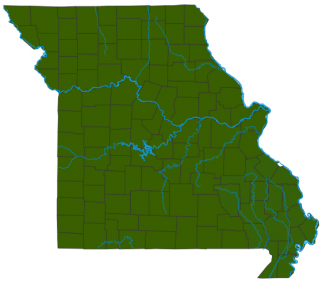
Orange day lily is a perennial lily with stout, fleshy roots, straplike leaves, and tall flower stalks that don't branch below the inflorescence. Flowers terminal on branched stalks, erect, with 3 sepals and 3 petals of dull orange color, the sepals slightly smaller, spreading, to 3½ inches long. Each flower lasts only one day. Blooms May–August. Leaves basal, narrow, straplike, hairless, somewhat folded lengthwise, to about 2 feet long.
Similar species: Yellow day lily (H. lilioasphodelus) is also commonly cultivated as an ornamental in Missouri, but so far it has not become established outside of cultivation in the state.
Height: about 3 feet.

Statewide.
Habitat and Conservation
Found along roads, disturbed stream banks, railroads, fields, pastures, old cemeteries, abandoned homes, and waste places. Native of Eurasia. Old-fashioned ornamentals, day lilies were widely planted by early settlers. This plant is sterile and has escaped from cultivation coast to coast by root divisions. Today there are thousands of garden hybrids but, strangely, none of those have been reported as escaped into the wild.
Human Connections
The flowers are rich in protein and are eaten in China; they can be fried or broiled much like squash blossoms or used as a flavoring in soups. The roots can be eaten raw or cooked and are said to taste like salsify. Neither insects nor diseases bother the plant.
Ecosystem Connections
Where this plant becomes established, it spreads by its roots and forms dense clumps that usually outcompete other plants. It can be difficult to eradicate, since its leaves resist weedkillers and new plants arise from small portions of roots that can be missed by digging.


























